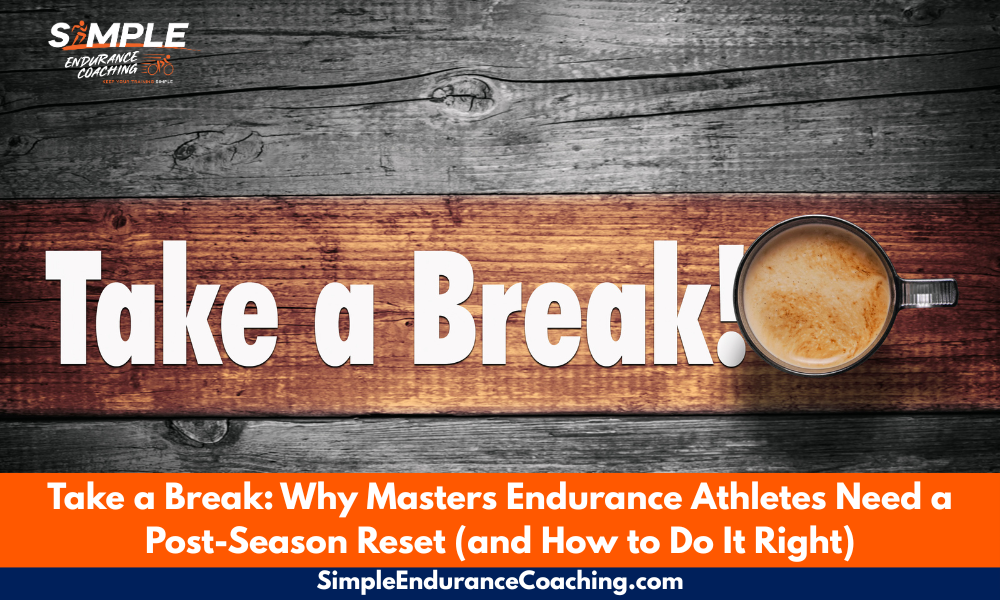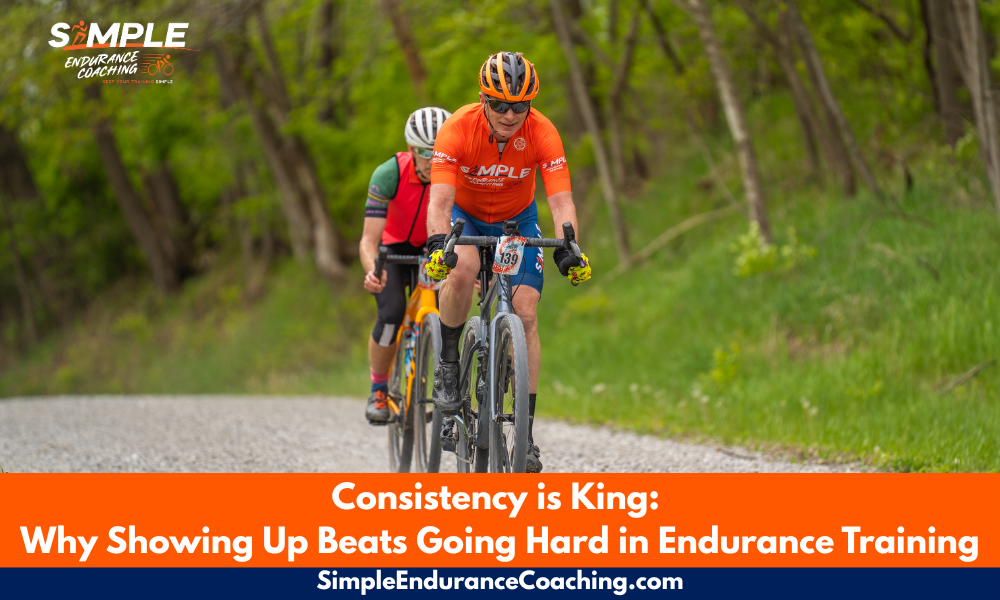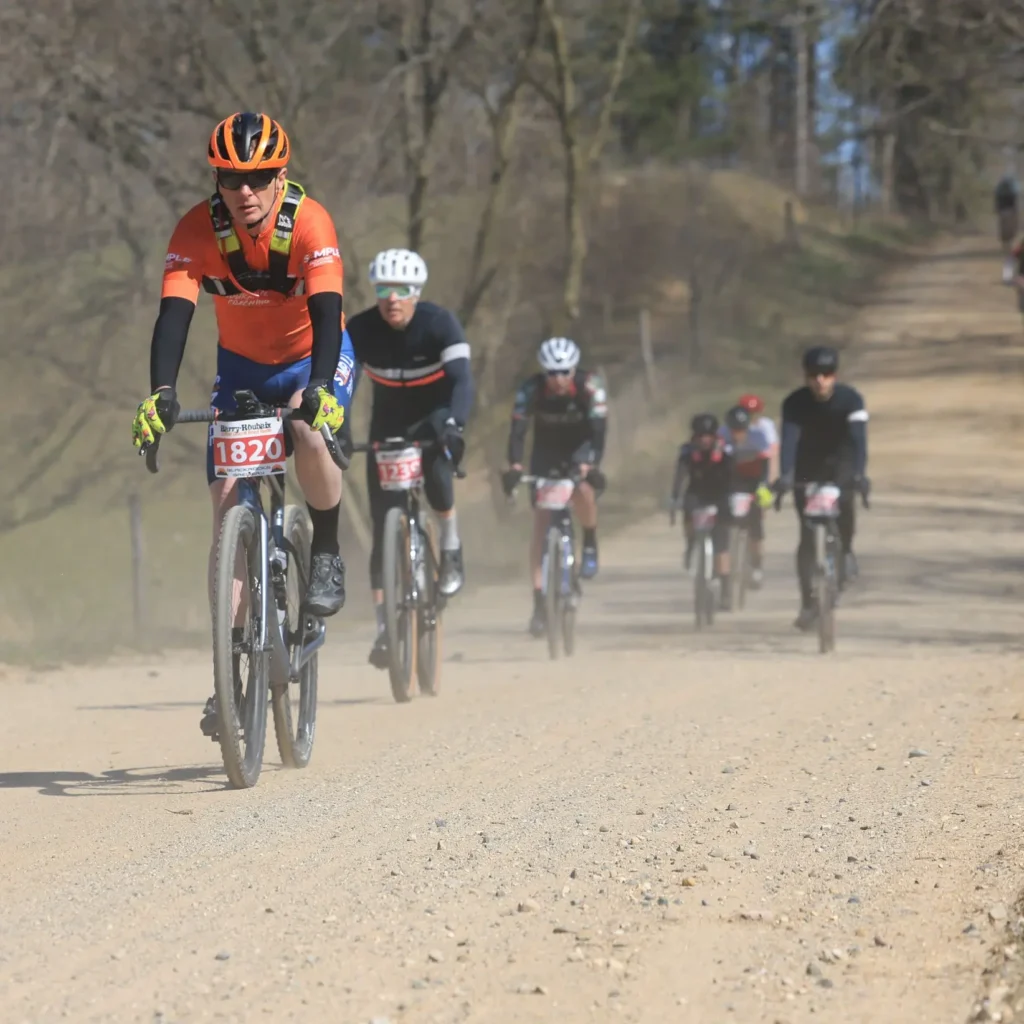
Several Simple Endurance Coaching athletes have signed up for the whole Colby or Cheddar series at Tour of America’s Dairyland in Wisconsin, as well as the Grit series in Chicago.
We’ve been talking a lot about how to manage five days or more of daily racing.
The three most important elements for a successful race series are good nutrition, recovery, and sleep.
Nutrition
You can stay strong and recover from multiple race days with good nutrition.
In some ways, a multiple-day race is an eating contest as well to make sure you replenish the glycogen in your muscles and recover from the day’s racing.
Protein
Aim for at least one gram of protein per pound of body weight per day.
That’s a lot of protein and, generally, you’ll need to supplement with protein powder shakes or Fairlife-like drinks with extra protein.
When you finish a race, starting with the pre-race tune-up ride you do the day before, drink a protein shake or drink with 20 to 30 grams of protein.
I’d suggest you have another protein shake/drink before you go to bed.
The protein stimulates and aids the rebuilding of your muscles, which have been broken down with the racing.
Carbohydrates
Eat some carbohydrates as soon after the race as you can.
And eat a good meal after the race that includes plenty of carbohydrates, protein, and good fats.
Eat when you’re hungry, but don’t stuff yourself.
Eating smaller meals more often will top off your glycogen stores.
Your body stores carbohydrates in the form of glycogen in your muscles and liver.
Those stores get depleted during intensity and need to be replenished after the race.
Rather than counting carbohydrates and possibly becoming fixated on the numbers, eat good, healthy carbohydrates, like oatmeal for breakfast, sweet potatoes, and rice.
A side note on nutrition: It’s entirely up to you, but alcohol can impair your sleep and alter your recovery.
You might want to save your post-race beers until you’re celebrating the end of the series.
Sleep
Sleep is where your body recovers from the previous workout to prepare for the next day’s race.
Get as much sleep as possible: nine hours is ideal.
Traveling to the races can make sleep a challenge, but do everything possible to get nine hours of sleep a night.
Sleep releases growth hormones that will speed recovery more than anything else.
Tip: If you’re in a hotel, bring your own pillow.
Good sleep hygiene includes a cool, dark room, reading before bed, and making sure you’ve eaten a good hour or so before sleeping to allow digestion to happen.
Short naps are also good, depending on when you race.
Recovery
The key to recovery, besides sleep and good nutrition, is staying off your feet as much as possible.
Bring a chair so you can watch other races from a comfortable spot.
If you need to get work done, find a coffee shop with chairs so you’re comfortable.
- Doing some yoga for recovery after every race will keep your joints and muscles loose.
- Massage therapy: Regular sports massages can help reduce muscle tension and soreness. Make sure these are not deep tissue massages. Those can make you sore and tired the next day. Post-race massages are generally “flushes” to help your body better process
- Foam rolling: Self-myofascial release with a foam roller can improve blood flow and reduce muscle tightness.
- Compression wear: Wearing compression garments can enhance blood flow and reduce muscle soreness and swelling. I usually put on tights soon after the race and wear them all evening.
- Relaxation techniques: Practice relaxation techniques such as deep breathing, meditation, or mindfulness to manage stress and mental fatigue.
- Positive visualization: Visualize successful performances and positive outcomes to maintain motivation and focus.
Before the race
Getting in a routine can take away many of the nerves and anxiety that can derail your recovery. Here are some tools to use the day of your race:
1. Nutrition
- Pre-race meal: Consume a carbohydrate-rich meal 3–4 hours before the race. Aim for 1–4 grams of carbohydrate per kilogram of body weight. This helps to ensure your glycogen stores are topped off. Include a moderate amount of protein and a small amount of fat.
- Example meal: Oatmeal with bananas and a small serving of yogurt or pancakes with eggs and fruit.
- Hydration: Start the day with 500–750 ml of water upon waking and continue to sip on water or an electrolyte drink leading up to the race.
- Snack one hour before the race: Have a light, easily digestible carbohydrate-rich snack if needed.
- For example, a snack can be a banana, an energy bar, or a piece of toast with jam.
- You might want to have a gel while you’re waiting for the start.
2. Warm-Up Routine
- Dynamic warm-up: Engage in a dynamic warm-up routine to increase blood flow and muscle temperature, preparing your body for intense activity. Include movements like leg swings, high knees, and butt kicks.
- Cycling warm-up: A 15–20 minute warm-up on the bike that includes easy pedaling, followed by a few short, high-intensity efforts to activate your anaerobic system and increase your heart rate. Our warmup is a few minutes of easy riding, a few minutes of tempo riding, followed by a few more minutes of easy riding. Then we do three 20 to 30-second hard efforts to get our heart rates to race levels.
3. Mental preparation
- Visualization: Spend a few minutes visualizing the race course and your strategy. Picture yourself riding smoothly, handling turns efficiently, and reacting to race dynamics confidently.
- Positive affirmations: Use positive self-talk to boost your confidence and focus.
4. Gear check
- Bike check: Ensure your bike is in optimal condition. Check tire pressure, brakes, gears, and any other essential components. Bring your bike to your local bike shop or have a good mechanic go over your bike before the start of the racing.
- Equipment and nutrition: Make sure you have all necessary equipment, such as your helmet, shoes, race kit, and on-bike nutrition (gels, bars, and bottles). It’s often helpful to create a checklist to make sure you have everything.
5. Timing and logistics
- Race timing: Plan to arrive at the race venue with enough time to handle registration, set up, and warm-up without feeling rushed. I generally get there 90 minutes before the start of a race so I can register, do my pre-race rituals, and get on the trainer.
- Course familiarization: If possible, ride some laps of the course, noting any challenging sections or technical turns, and especially note the finish line to decide how you want to handle the sprint. For example, for criteriums, I generally walk the course to understand the layout, identify key points for strategic positioning, and plan my approach to the finish line.
Close Attention to Three Pillars
Racing at peak performance during a multi-day event like the Tour of America’s Dairyland requires close attention to nutrition, sleep, and recovery.
By focusing on these three pillars, racers can ensure they are in the best possible condition to perform day after day.
- Nutrition involves not just fueling for the race but also recovering with the right balance of protein, carbohydrates, and hydration.
- Sleep, often overlooked, is crucial for physical and mental recovery, with nine hours being the ideal target.
- Recovery strategies like yoga, massages, and relaxation techniques help maintain physical and mental health throughout the series.
- Pre-race preparation, including a structured routine for nutrition, warm-up, mental preparation, gear check, and logistics, sets the stage for success.
By following these guidelines, cyclists can manage the demands of racing multiple days in a row, optimizing their performance and enjoying the competitive spirit of the event.
Three Things to Know About Preparing for a Multi-Day Event
- Nutrition is an eating contest—aim for 1 gram of protein per pound of body weight daily and reload carbs right after racing to restore glycogen for the next day.
- Sleep is your biggest recovery tool—target 9 hours a night to release growth hormones and repair your body, even if it means napping between races.
- Recovery isn’t just rest—use yoga, foam rolling, and compression wear to boost blood flow and reduce soreness so you’re ready to race again.
Need more?
Unlock the secrets to mastering gravel racing with our FREE Guide to Gravel Racing! Get yours here.
SIGN UP FOR A FREE Virtual Coffee so we can discuss your goals, ask questions, and talk about making your endurance training more effective, fun, and Simple.
Paul Warloski is a:
- USA Cycling Level 1 Advanced Certified Coach
- RRCA Running Coach
- Training Peaks Level 2 Coach
- RYT-200 Yoga Instructor
- Certified Personal Trainer




